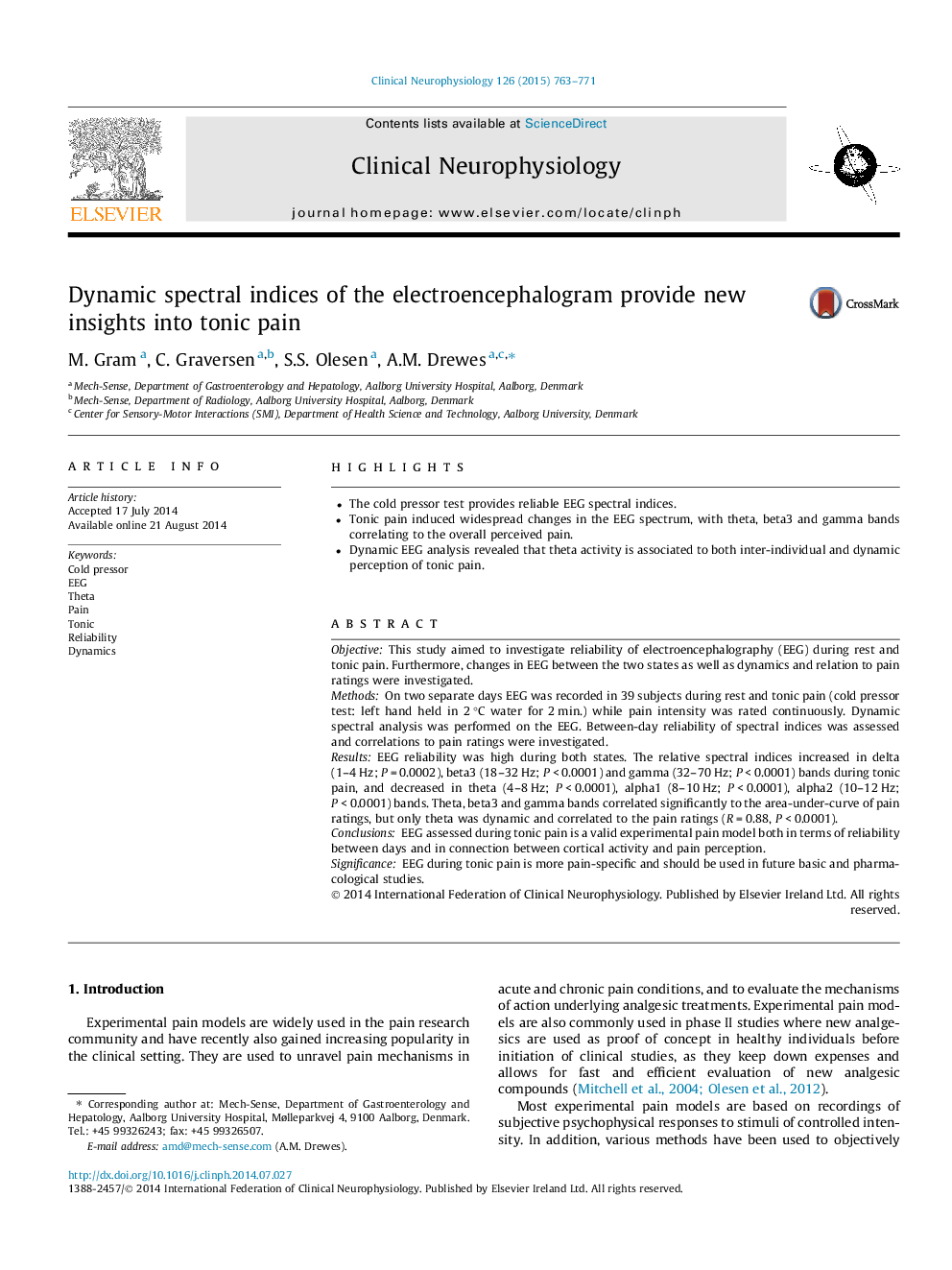| Article ID | Journal | Published Year | Pages | File Type |
|---|---|---|---|---|
| 3043005 | Clinical Neurophysiology | 2015 | 9 Pages |
•The cold pressor test provides reliable EEG spectral indices.•Tonic pain induced widespread changes in the EEG spectrum, with theta, beta3 and gamma bands correlating to the overall perceived pain.•Dynamic EEG analysis revealed that theta activity is associated to both inter-individual and dynamic perception of tonic pain.
ObjectiveThis study aimed to investigate reliability of electroencephalography (EEG) during rest and tonic pain. Furthermore, changes in EEG between the two states as well as dynamics and relation to pain ratings were investigated.MethodsOn two separate days EEG was recorded in 39 subjects during rest and tonic pain (cold pressor test: left hand held in 2 °C water for 2 min.) while pain intensity was rated continuously. Dynamic spectral analysis was performed on the EEG. Between-day reliability of spectral indices was assessed and correlations to pain ratings were investigated.ResultsEEG reliability was high during both states. The relative spectral indices increased in delta (1–4 Hz; P = 0.0002), beta3 (18–32 Hz; P < 0.0001) and gamma (32–70 Hz; P < 0.0001) bands during tonic pain, and decreased in theta (4–8 Hz; P < 0.0001), alpha1 (8–10 Hz; P < 0.0001), alpha2 (10–12 Hz; P < 0.0001) bands. Theta, beta3 and gamma bands correlated significantly to the area-under-curve of pain ratings, but only theta was dynamic and correlated to the pain ratings (R = 0.88, P < 0.0001).ConclusionsEEG assessed during tonic pain is a valid experimental pain model both in terms of reliability between days and in connection between cortical activity and pain perception.SignificanceEEG during tonic pain is more pain-specific and should be used in future basic and pharmacological studies.
